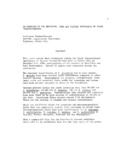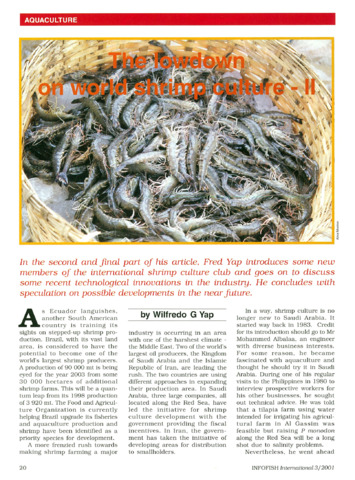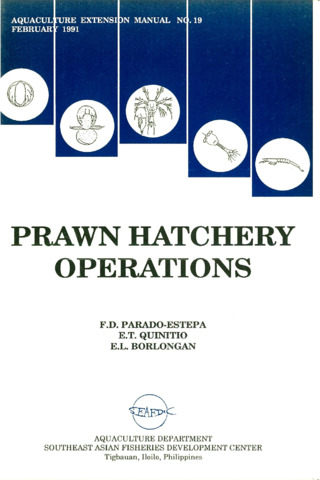| dc.contributor.author | Ferraris, Ronaldo P. | |
| dc.contributor.author | Estepa, Fe Dolores P. | |
| dc.contributor.author | Ladja, Jocelyn M. | |
| dc.contributor.author | de Jesus, Evelyn Grace | |
| dc.contributor.editor | Taki, Yasuhiko | |
| dc.contributor.editor | Primavera, Jurgenne H. | |
| dc.contributor.editor | Llobrera, Jose A. | |
| dc.date.accessioned | 2012-04-20T03:41:10Z | |
| dc.date.available | 2012-04-20T03:41:10Z | |
| dc.date.issued | 1985 | |
| dc.identifier.citation | Ferraris, R. P., Estepa, F. D. P., Ladja, J. M., & de Jesus, E. G. (1985). Osmotic, total protein and chloride regulation in Penaeus monodon (Abstract only). In Taki Y., Primavera J.H. and Llobrera J.A. (Eds.). Proceedings of the First International Conference on the Culture of Penaeid Prawns/Shrimps, 4-7 December 1984, Iloilo City, Philippines (pp. 165-166). Iloilo City, Philippines:Aquaculture Department, Southeast Asian Fisheries Development Center. | en |
| dc.identifier.isbn | 9718511008 | |
| dc.identifier.uri | http://hdl.handle.net/10862/899 | |
| dc.description | Abstract only. | en |
| dc.description.abstract | The osmotic, total protein and chloride ion regulation in two size groups (10 and 30 g) of Penaeus monodon Fabricius was investigated. Preliminary experiments showed that osmolality, total protein and chloride concentrations tend to become stable 24 to 36 hours after molting.Thus,hemolymph values 36 to 240 hours after sampling were not significantly different from each other. Based on these results, only 36 hours (or more) postmolt animals were sampled after transfer from control (32 ppt) to five test salinities (8, 16, 24, 32 and 40 ppt). Hemolymph samples were then taken 1, 2, 3, 5, 7 and 10 days after transfer. Results showed that in general, osmolality, total protein and chloride concentrations in the hemolymph did not vary with time within the same salinity.Both sizes exhibited hyperosmotic and hyperionic regulation in lower salinities and hypoosmotic and hypoionic regulation in higher salinities. The isosmotic values obtained were approximately 676 to 720 mOsm (24 to 28.8 ppt) for the 10 g, and 724 to 792 mOsm (26 to 28.5 ppt) for the 30 g size group. For chloride, the isoionic values ranged from 324 to 339 mM in 10 g prawns. Slopes of the regression lines of hemolymph osmolality versus salinity in 10 g prawns were not significantly different from slopes of similar regression lines in 30 g prawns. These results suggest that the ability to regulate osmotic and total protein concentration in the hemolymph is similar in the two size groups. | en |
| dc.language.iso | en | en |
| dc.publisher | Aquaculture Department, Southeast Asian Fisheries Development Center | en |
| dc.subject | Animal physiology | en |
| dc.subject | Osmoregulation | en |
| dc.subject | Shrimp culture | en |
| dc.subject | Penaeus monodon | en |
| dc.title | Osmotic, total protein and chloride regulation in Penaeus monodon | en |
| dc.type | Oral presentation | en |
| dc.citation.spage | 165 | |
| dc.citation.epage | 166 | |
| dc.citation.conferenceTitle | Proceedings of the First International Conference on the Culture of Penaeid Prawns/Shrimps, 4-7 December 1984, Iloilo City, Philippines | en |
| dc.subject.scientificName | Penaeus monodon | |



